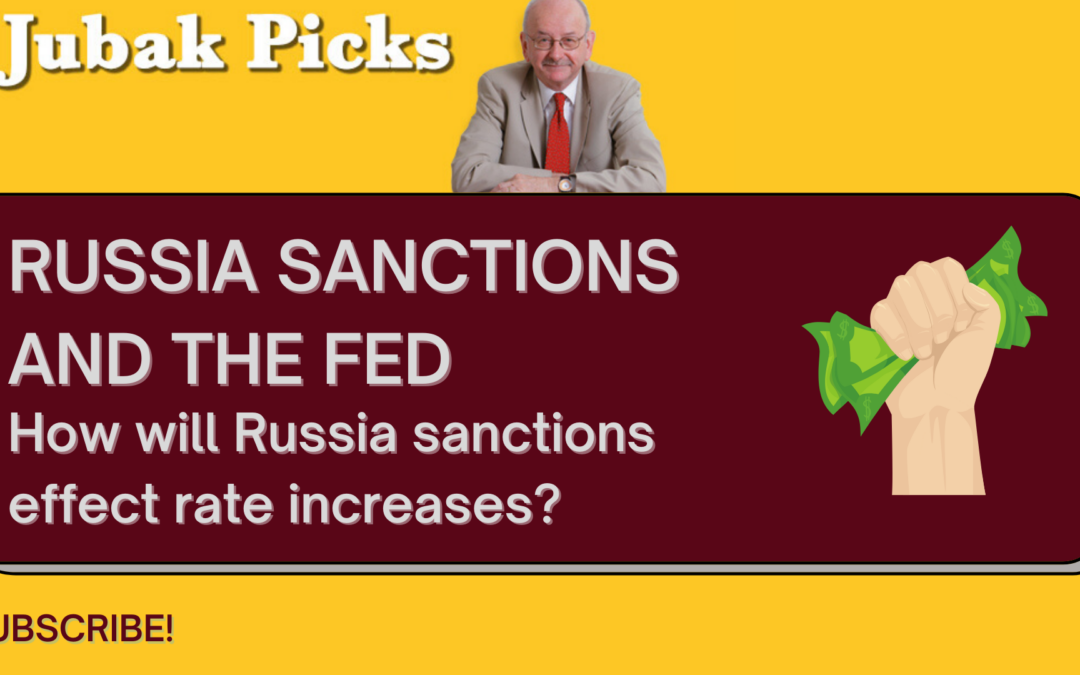
March 10, 2022 | Daily JAM, Morning Briefing |
Economists surveyed by Bloomberg had projected that inflation, as measured by the Consumer Price Index, would jump to a 7.9% annual rate for February. And that’s exactly what the Labor Department reported today, March 10. That’s a jump from the 7.5% annual rate in January. And it is the fastest annual rate of inflation in 40 years.

March 9, 2022 | Daily JAM, Mid Term |
Consternation isn’t an investment strategy. Although I certainly understand that reaction to current stock market moves. The day to day volatility is that extreme. But if we focus on that volatility and on how confusing this market is, I think we’re in danger of overlooking the investable trends (up and down) in this market. So let me try, please remember that this is a work in progress and subject to revision, to tease out some of the longer trends that will drive stock prices in the medium term.

March 4, 2022 | Daily JAM, Morning Briefing |
The U.S. economy added 678,000 new jobs in February. That was the most new jobs since July. Economists surveyed by Bloomberg had expected the economy to add 423,000 jobs in the month. The official unemployment rate fell to 3.8%. Average hours earnings, however, lagged

March 2, 2022 | Daily JAM, Morning Briefing |
In as straight forward a statement as the Federal Reserve can make, Fed chair Jerome Powell said the U.S. central bank will start a new cycle of higher interest rates with a 25 basis point increase on March 16. (It takes 100 basis points to make one percentage point.)

March 1, 2022 | Daily JAM |
The estimate for real GDP growth fell to 0.0% in the first quarter, according to the GDPNow model at the Atlanta Federal Reserve.

February 25, 2022 | Daily JAM, Short Term |
The Personal Consumption Expenditures index, the Federal Reserve’s preferred measure of inflation, rose at a year over year 6.1% rate in January. That tops the 5.8% annual rate in December. Economists had been projecting a 6% increase for January.

February 24, 2022 | Daily JAM, Short Term |
I know it’s easy to forget that there’s other market moving news on the horizon (besides what the next day will bring in the Russian invasion of Ukraine) but tomorrow, Friday, February 25, the government will report the Personal Consumption Expenditures (PCE) price index, the inflation index that the Federal Reserve uses, for January. That measure is projected to show inflation rising at an annual rate of 6% in January, according to economists surveyed by Bloomberg. The core rate, which excludes food and fuels, is forecast to climb to an annualized 5.2%. The PCE index was up 5.8% year over year in December. The core rate was up 4.9% year over year in December.

February 23, 2022 | Daily JAM, Morning Briefing, Videos |
I’m starting up my videos on JubakAM.com again–this time using YouTube as a platform. My one-hundredth-and fifth YouTube video “Russia sanctions and the Federal Reserve’s interest rate increases” went up today. So how will the seemingly imminent confrontation between the United States and Russia over the fate of Ukraine, and the likelihood of continuing economic sanctions against Russia change the prospects for interest rate increases by the Fed in the coming months. Ya think that the prospect of sanctions on Russia and possible Russian cyberattacks might change the Fed’s schedule?

February 21, 2022 | Daily JAM, Morning Briefing |
The personal consumption expenditures (PCE) price index, the inflation index that the Federal Reserve uses, is projected at an annual rate of 6% in January, according to economists surveyed by Bloomberg. The core rate, which excludes food and fuels, is forecast to climb to an annualized 5.2%.

February 19, 2022 | Daily JAM, Short Term, You Might Have Missed |
Yes, interest rates and the Federal Reserve and the Ukraine/Russia conflict are likely to dominate stock market direction this week, but don’t forget the power of the Iran/United States nuclear talks to move oil prices or the power of moves by Chinese regulators to wipe billions off the value of the country’s Internet stocks

February 13, 2022 | Daily JAM |
Inflation fears and projections of interest rate increases from the Federal Reserve continue to run amuck. It’s important to remember that the financial markets tend to over shoot on both the upside and the downside. And right now, boy, are they in overshoot mode.

February 10, 2022 | Daily JAM, Morning Briefing |
CPI inflation climbed at a 7.5% annual rate in January, the Bureau of Labor Statistics reported this morning. That was above the 7.3% expected by economists surveyed by Bloomberg and a big jump from the 7.0% annual rate reported in December. The inflation number just about guarantees that the Federal Reserve will raise its short-term benchmark interest rates at its March 16 meeting from the current 0% to 0.25% range.













